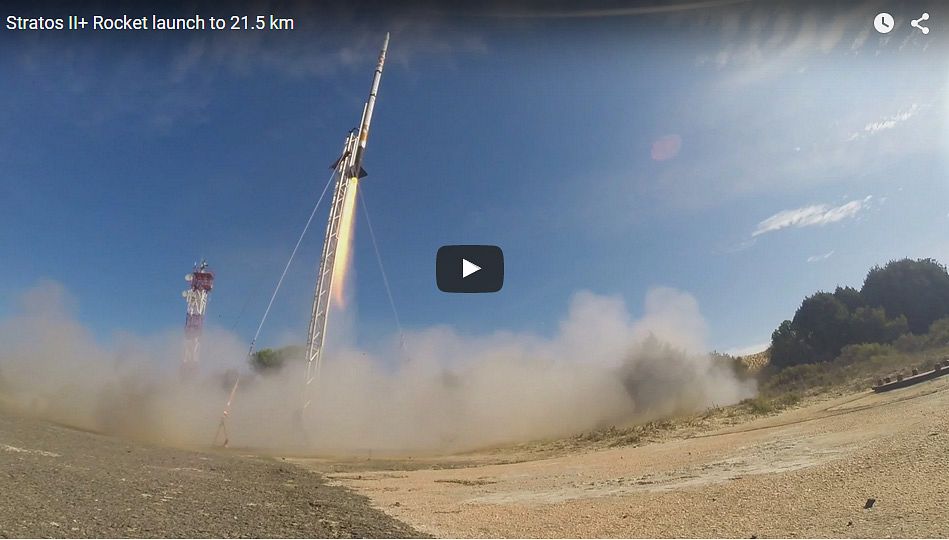The record of 21,5 kilometre for amateur rockets is in the pocket. Still, the target was more than twice as high. What went wrong?
Perhaps ‘wrong’ is not the right word for a powerful and blasting launch of the Stratos II+ rocket by the DARE student rocket team on October 16, 2015. After all, the 7-metre rocket did reach a new altitude record of 21.457 metres – twice as high as airliners fly.
To be fair, the target was 50 kilometres: at the edge of space. So what held the rocket back? Press officer Christ Akkermans stresses that the analysis of the data has not yet begun.
What he does know is this: the engine burned the full 20 seconds, as it was supposed to. The speed was just a little smaller than it should have been (2500 km/hr instead of 3000 km/hr). And the rocket splashed into the ocean further away than planned.
From these observations, it seems that the rocket’s orbit was flatter than intended. The Stratos rocket was fired at an angle of 85 degrees but winds higher up in the atmosphere seem to have curved the trajectory. The rocket had no means of changing its direction of flight.
Again, analysis of the flight data will have to make clear what happened exactly, after which the DARE team will decide on their next course of action. It could be they’ll go for a third attempt with the 7-metre long Stratos II+, alternatively they could choose for a larger rocket still aiming almost literally for the stars at 100 kilometres.



Comments are closed.